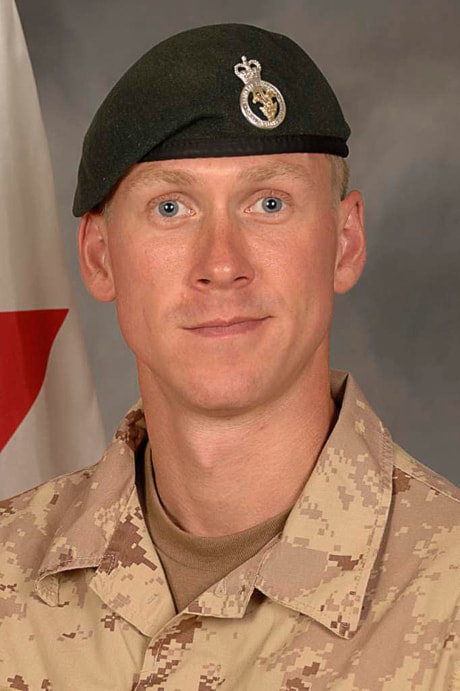KANDAHAR, Afghanistan A period of relative post-fighting season calm was shattered Wednesday when a Canadian soldier on foot patrol in the volatile Panjwaii district of southern Afghanistan was killed.
Lt. Andrew Richard Nuttall, along with an Afghan soldier, died when an improved explosive device detonated in the town of Nakhoney, the military said early Thursday.
An interpreter was seriously injured.
Nuttall, 30, of Prince Rupert, B.C., belonged to the 1st Battalion Princess Patricia’s Canadian Light Infantry based in Edmonton.
“Andrew came to Afghanistan because he honestly thought he could make a difference to the people of Afghanistan,” said Brig.-Gen. Daniel Menard, commander of coalition forces in Kandahar province.
“He wanted to lead from the front and set the example, attributes he passionately displayed every time he was in front of his platoon.”
Menard described Nuttall as generous, someone who always had a smile on his face and “greeted everyone he met with enthusiasm and goodwill.”
The death was the first in almost two months, when Sapper Steven Marshall was killed, and the first since Menard took over as top commander in Kandahar province.
Marshall died Oct. 30 in a similar incident — in what has been a record year for IED attacks in Afghanistan.
Since April 2007, 66 of the 89 Canadian deaths in Afghanistan have been the result of improvised explosive devices
In all, 134 Canadian soldiers have now been killed on the Afghan mission since it began in 2002.
With the relative quiet of the post-summer ebb in violence, Canadian soldiers, reinforced by hundreds of fresh American troops, have been attempting to establish secure areas in and around Kandahar city.
The aim, according to Menard, is to establish a “ring of stability” around the bustling city before the uptick in fighting traditionally begins in the spring — the phenomenon known as “fighting season.”
Nakhoney, about 25 kilometres southwest of Kandahar City, one part of what was dubbed the Panjwaii triangle, has been an area in which Canadian forces have frequently encountered problems.
In July, for example, Canadian and Afghan soldiers uncovered four factories used by the Taliban to make improvised explosive devices. They also seized suicide-bomber vests, large quantities of explosive materials as well as weapons.
One soldier, Pte. Sebastien Courcy was killed during the operation when he stepped on an explosive.
Menard recently cited Nakhoney as an example where the reinforced Canadian forces were having an impact in providing security for local Afghans.
At the time of his death, Nuttall was searching for Taliban transit routes, Menard said.
“His patrol was part of our efforts to protect the people of the village from insurgents.”
Nuttall is survived by his mother Jane and father Richard.
Under Menard’s new strategy, soldiers are moving out of their relatively safe operating bases to move into platoon houses in the community.
